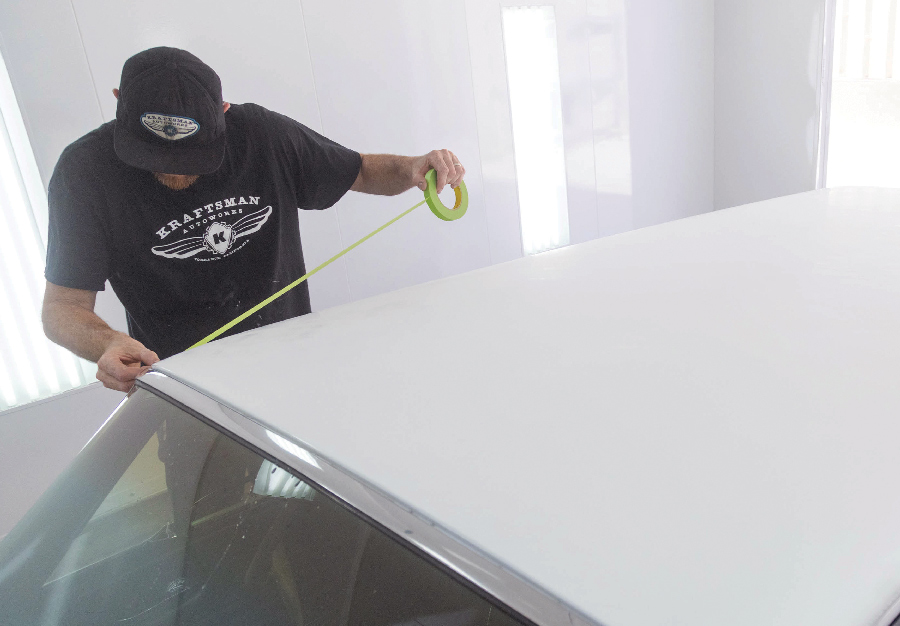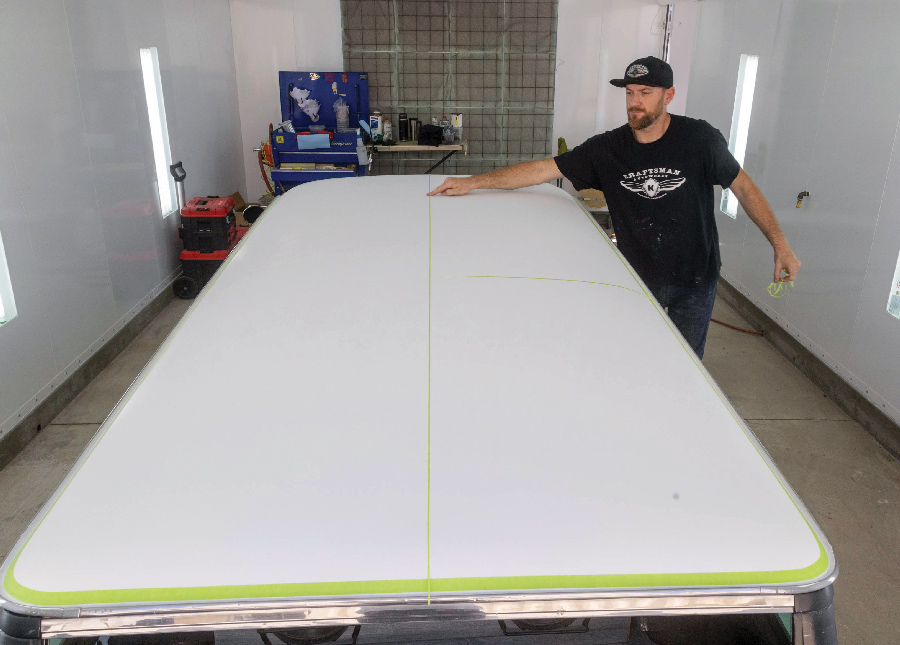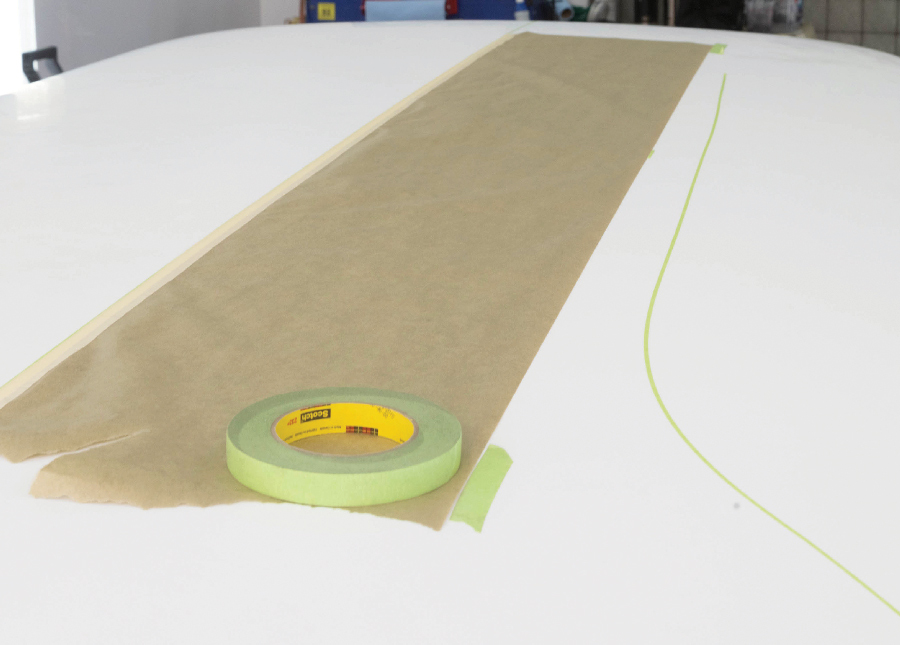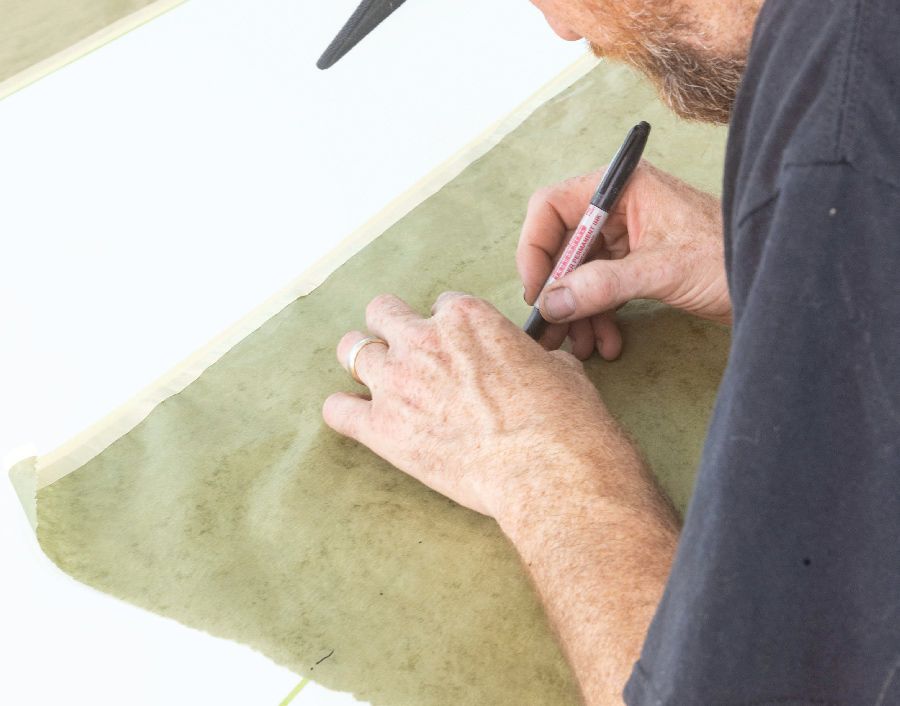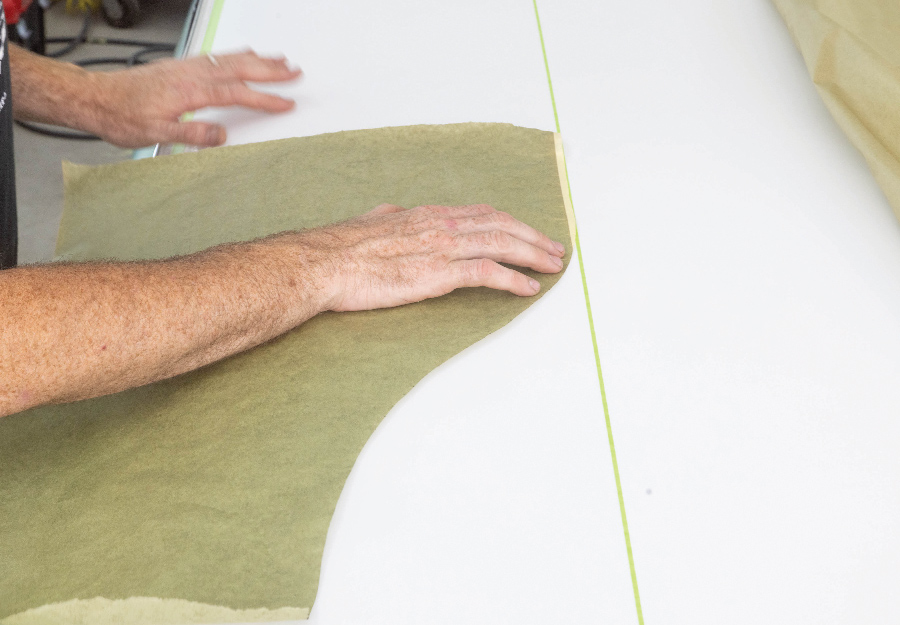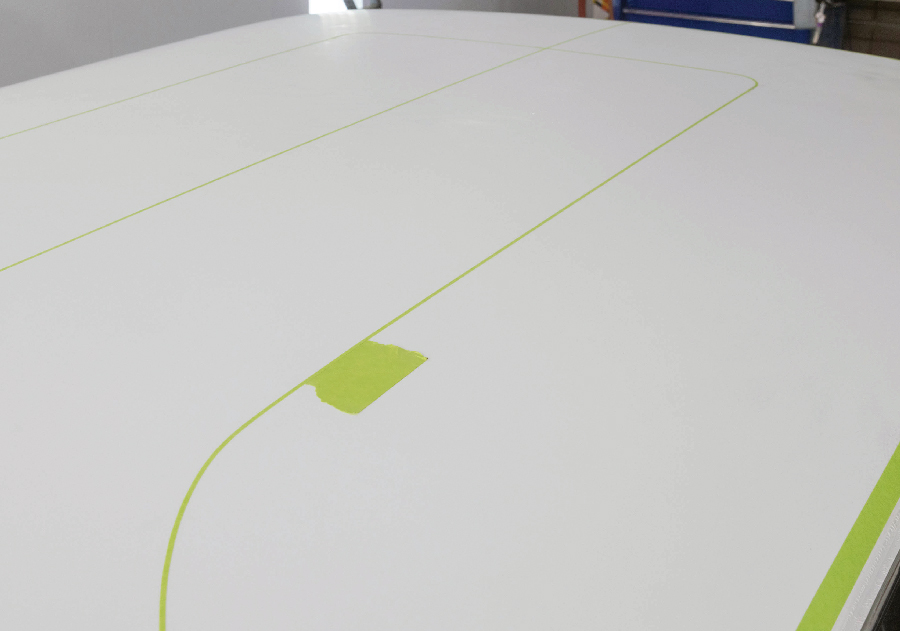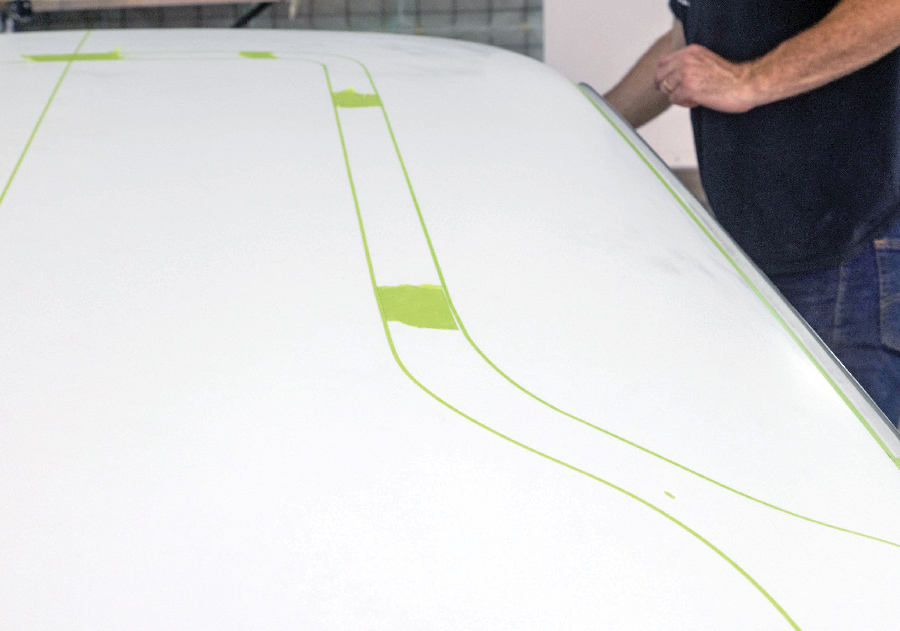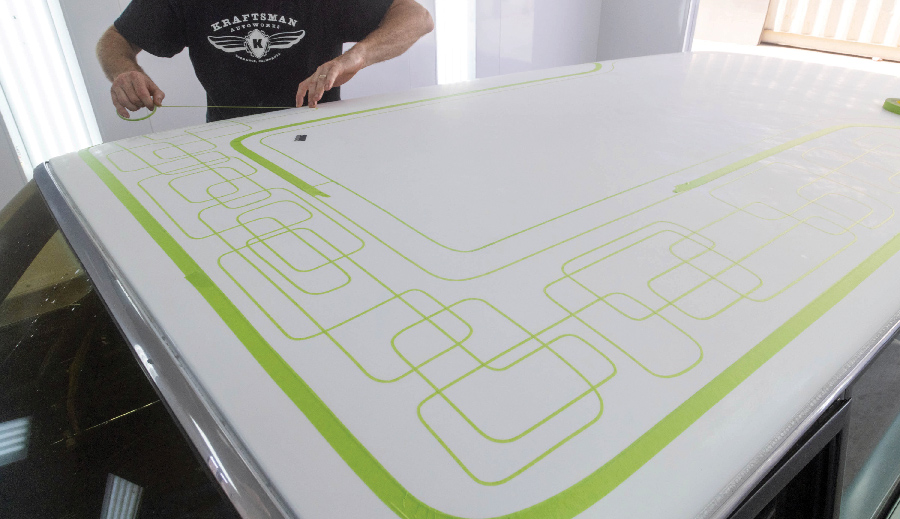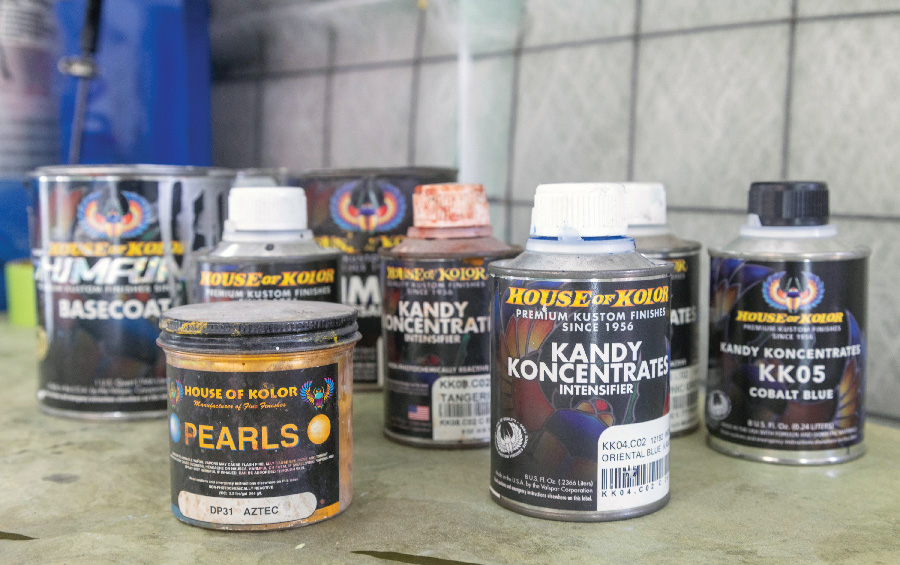

 Photography & Videography by TIM SUTTON
Photography & Videography by TIM SUTTONo get a better feel for what it takes to add your own custom touch through panel painting and added lace artwork to your hot rod or custom we visited with Jack Fields of Kraftsman Autoworks in Torrance, California. Fields regularly uses House of Kolor paints and as luck would have it, Fields had a station wagon going through the paint process and its owner wanted something special for the roof. (We are seeing more and more custom panel and lacework painting done to roofs of cars while the remainder of the paintjob is straightforward. It’s proven particularly popular on station wagons, customs, and Gassers builds.)
We followed along and watched Fields who has the experience, creativity, and patience to do this type of work. Basically, as with any paintwork, it’s all in the preparation. Here Fields preps the roof of this wagon. He began with a degreaser to make sure that the surface is clean and free from any and all “baddies.” Next up he’s now going over the roof (or the surface to be painted) with 600-grit paper wrapped around a soft sanding block. If there was some “orange peel” to work around then you might start with a 400-grit paper. The intent is to knock off the shine and prep the color (there’s no clear sprayed over the paint at this time) so that the new designs can be sprayed on and it will “grip” (adhere to) the base color. House of Kolor (HOK) offers a solvent-based, California-compliant white paint that was used on our project wagon. (Many other companies have gone with waterbase paints but HOK has achieved success utilizing a solvent-based paint.) Fields also used Kandy Koncentrates, which was developed by HOK to intensify the base color. It will also speed up your spray process by using it to tint your base color and sealer. (It is also recommended for airbrushing.)
After degreasing and sanding comes the initial design phase. Here Fields begins the fun part, laying out the design, which in this case relies on a great deal of free-form art so that’s why you go to someone like Fields who has an artistic sensibility and can conceptualize the result, knows how to get there, and what it will look like.
Fields has a pair of parallel and free-flowing lines as well as symmetrical panels in his roof design and as such he needed a way of keeping the parallel lines to stay parallel even though they bend during their flow from front to the rear of the roof. Here he uses a handful of pieces of 2-inch-wide masking tape to maintain spacing between the parallel lines as they traverse the roof. From here it’s a series of trial-and-error shapes to find out what shapes yield the design most desirable. Fields also uses a series of “endless lines” that gives the asymmetrical shapes that occur.
Fields selected the use of HOK candy-colored paints because the roof was done in a white pearl that has a metallic in it. The candy is a transparent paint so that the pearlescent color of the flake will stand out. From here when you spray the candy colors over the metallic it will reflect back through the pearl. Next month we will deal with the painting and lacework.

